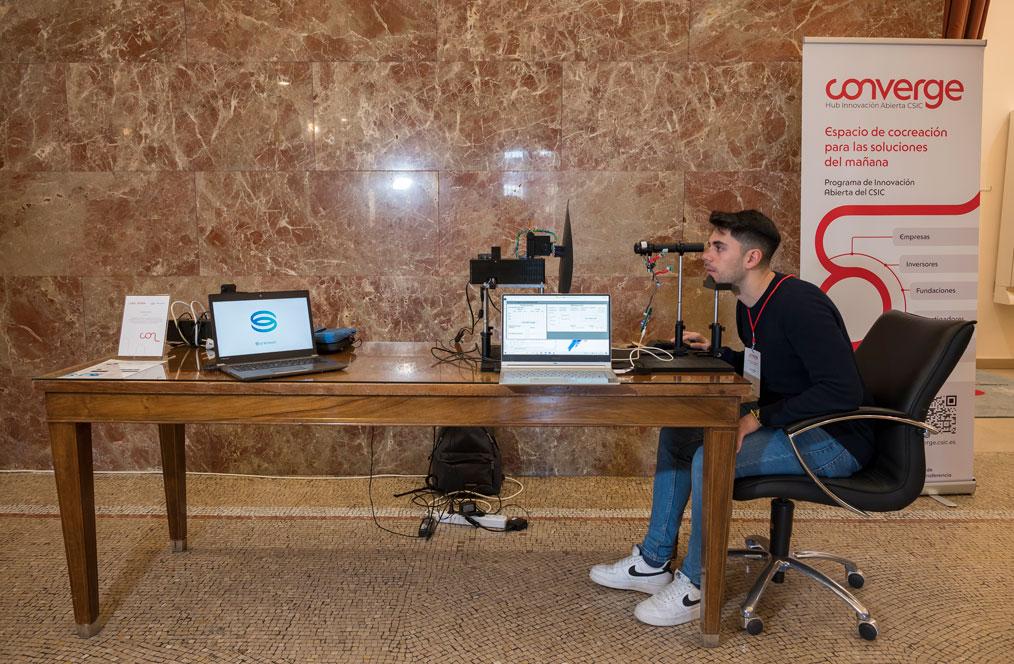The SureVision project lead by our colleague, Víctor Rodríguez López, has been one of the 10 projects selected by the Impulsa-T program, focused on the promotion and development of business ideas originated in the CSIC.
The objective of the program is to promote the creation of Knowledge-Based Companies (KBE) that not only represent outstanding ways of bringing scientific advances to the market, but also play an essential role in technological maturation and generation of highly qualified employment.
SureVision is a research project that consists of the development of a new instrument to evaluate refractive error, that is, the amount of myopia, hyperopia, astigmatism and presbyopia in the human eye, conditions that affect more than 2/3 of the world’s population, and 100% over the age of 50.

SureVision ophthalmic instrument
The core of the project is the development of a new ophthalmic instrument capable of providing a visual prescription more accurately and in less time than the traditional method, improving the patient experience, giving the clinician more time and increasing the reliability of the result. SureVision is based on a new and disruptive method, called Direct Subjective Refraction, which uses a rapid and periodic change of focus through an opto-adjustable lens and a color test, so that the task is to minimize the chromatic flicker caused by this focus change. It is the first method that does not rely on traditional letter identification to obtain the prescription. SureVision allows the prescription to be obtained 2x more accurately and 5x faster than the traditional method, where the patient performs a simple and easy to understand task autonomously.
Drastically reducing measurement time means increased access to a simple graduation in less populated areas, where the main problem is the shortage of professionals to perform the measurements. On the other hand, a reduction in patient measurement time translates into greater resource efficiency: the clinician can measure more patients and/or perform other additional tests, which are not currently performed due to lack of time, and thus provide a complete examination to detect other visual disorders. In addition, both advantages, both increased accuracy and increased time available to the practitioner, are quantifiable activities in economic terms by clinics, potentially increasing the profit obtained from a visit.
Thanks to the help of IMPULSA-T, we want to focus on the following objectives:
1) Advancing scientific and clinical knowledge of the new evaluation method.
2) Development of the first functional prototype.
3) Explore the possibilities of commercial exploitation.
Related news
New in the lab: Elena Moreno and Diego Dijkstra
Elena Moreno Rubio, BSc in Physics by the University of Murcia and current MSc student in Optical and Imaging Technologies at the Complutense...
Diagnosis of ocular diseases by ocular biomechanics
Tomorrow, January 25, VioBio Lab researcher Judith Birkenfeld will give a guest lecture at the Fernández Vega Foundation as part of the Fernández...
Ryan McAuley PhD thesis defense
Last January 5th, Ryan McAuley successfully defended his PhD thesis on ‘Probing sub-resolution tissue structural and mechanical properties with...




